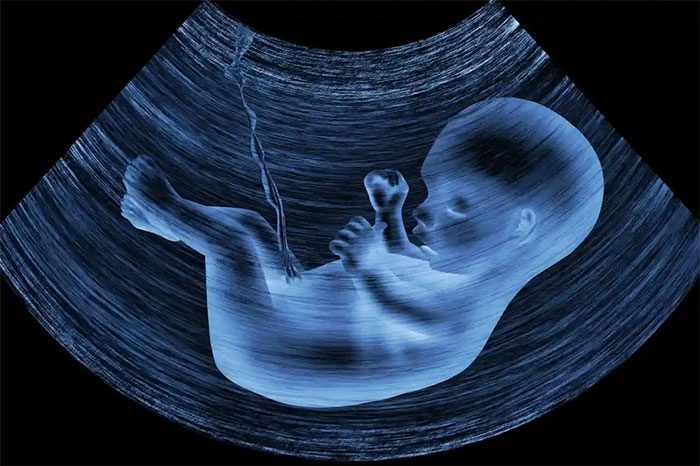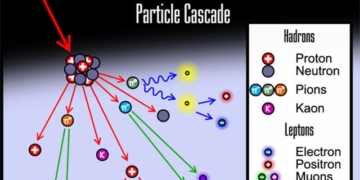The presence of microplastics in breast milk is a wake-up call regarding the prevalence of these hazardous particles in the human environment.
The threat posed by microplastics has reached a new alarming level after scientists discovered their presence in breast milk for the first time. This means that the health of newborns, who are directly affected by breast milk as the best source of nutrition in their first year of life, is at risk, according to the Guardian.
A Wake-Up Call
According to scientists, newborns are particularly sensitive and vulnerable to chemical pollutants. Although further research is needed for clarification, experts emphasize that breast milk, the best food source for infants, is at risk of becoming a hazard for young children.
This conclusion comes after studies by a group of Italian scientists on breast milk, published in the journal Polymers.
Samples of breast milk were collected from 34 adult women within a week after giving birth in the capital city of Rome. It was found that microplastics were detected in 75% of the milk samples.

75% of collected breast milk samples contained microplastics. (Photo: Guardian).
The research by the Italian scientists found that the collected milk samples contained microplastics including polyethylene, PVC, and polypropylene, all commonly found in packaging materials.
The scientists were unable to identify particles smaller than 2 microns; however, they believe that smaller plastic particles likely exist in the collected milk samples.
The process of collecting and processing the milk samples was conducted in a plastic-free environment to ensure the accuracy of the research.
Researchers noted that the mothers participating in the study used food and drinks in plastic containers, seafood, and personal care products containing plastic. However, the research team did not find a direct correlation between these sources and the presence of microplastics.
This indicates that the presence of microplastics in the environment has become so widespread that humans cannot avoid exposure to them.
Previous studies have shown the harmful effects of microplastics found in various human, animal, and aquatic tissues. Plastics carry harmful chemicals for humans, one of which is phthalate.
In 2020, researchers also found microplastics in human placentas, according to Global News.
“Thus, the evidence of microplastics appearing in breast milk further raises concerns about the safety of newborns,” said Dr. Valentina Notarstefano from the Polytechnic University of Marche.
Dr. Notarstefano emphasized that researching ways to reduce exposure to microplastics during pregnancy and breastfeeding is extremely important for protecting children.
The Italian expert also highlighted that breastfeeding infants still has absolute benefits compared to the disadvantages posed by the presence of microplastics in breast milk.
“Our research should not be a reason to reduce breastfeeding in young children; rather, it aims to raise community awareness to pressure politicians into enacting regulations to reduce pollution,” asserted Dr. Notarstefano.
Recent studies indicate that children drinking bottled milk may also be at risk of ingesting millions of microplastic particles each day. Additionally, cow’s milk also contains microplastics.
The Tip of the Iceberg
Humans release a massive amount of plastic waste into the environment every day, causing microplastics to infiltrate every corner of the planet, from the peak of Everest to the deepest parts of the ocean.
Through food, drinks, and even breathing, humans are introducing microplastics into their bodies. Evidence shows that microplastics have been found in the feces of adults and even infants.

Microplastics have been found in human blood, placentas, and infant feces. (Photo: Guardian).
“We advise pregnant mothers to be extremely careful in avoiding foods and drinks packaged in plastic, cosmetics, and toothpaste containing microplastics, as well as clothing made from synthetic fabrics,” said Dr. Notarstefano.
In March, a research team from the University of Amsterdam, led by Professor Dick Vethaak, found microplastics in human blood, according to National Geographic.
Professor Vethaak stated that recent research provides initial evidence of the presence of microplastics in breast milk; however, more studies with larger sample sizes and different methodologies are needed to confirm this.
“We are currently only seeing the tip of the iceberg named microplastics. Smaller plastic particles are often more common and harmful. However, analyzing ultrafine plastic particles in complex substances like breast milk is still very challenging,” said Professor Vethaak.
The Dutch expert also mentioned that the scientific community currently lacks extensive information about the potential impacts of microplastics and the pollutants they carry on breastfed infants.
Therefore, the urgent priority now is to conduct more research on newborns and young children, who are the most vulnerable to exposure to microplastics and harmful chemicals, said Vethaak.


















































